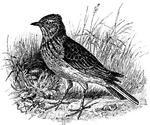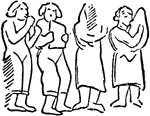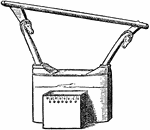Clipart tagged: ‘musical’
Aulos
"Roman Ivory Aulos found at Pompeii, showing slides and rings." — The Encyclopedia Britannica,…

Regal
A small portable organ played with the figures of the right hand, the left being used in working the…

Skylark
"The common lark of Europe, Alauda arvensis: so called because it mounts toward the sky and sings as…
Spinet
"The spinet is a keyed musical instrument much in use from 1500 to 1760. It derived its name from the…



